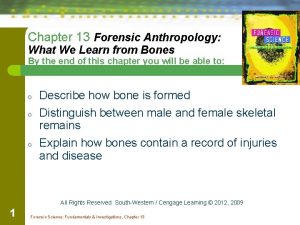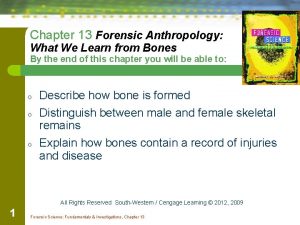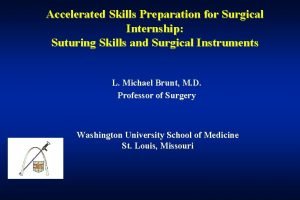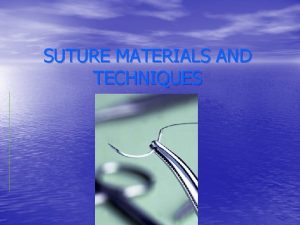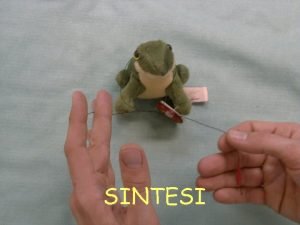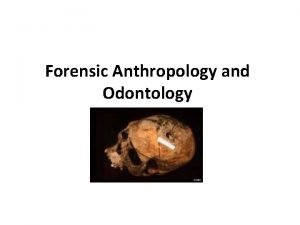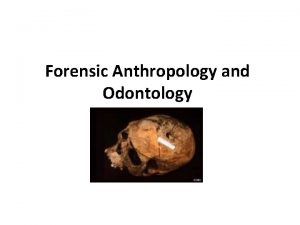Sutures and DNA Forensic Anthropology n Identification and













- Slides: 13

Sutures and DNA

Forensic Anthropology n Identification and examination of human skeletal remains – Trying to determine origin, sex, approximate age, race and skeletal injury – May create facial reconstruction – Identify victims of mass disaster such as plane crash

Aging of Bone • What can bone tell us? – Children build bones faster and bones grow in size – After 30 years – process starts to reverse and bones deteriorate faster than built • Can be slowed by exercise – # of bones and their condition can tell a person’s age, health, and calcium in food


Distinguishing Age • Bones don’t reach maturity at the same time – To help tell their age: – suture marks – presence or absence of cartilage

Osteobiography • The story of a life as told by bones • Things we can see: – Loss of bone density, poor teeth, signs of arthritis – Previous fractures, artificial joints, and pins – Right-handed vs. left-handed – Physical labor

Suture Marks • Zigzag areas where bones of the skull meet – In babies, some is soft tissue that is gradually ossified – Suture marks slowly fade to give smoother appearance as bones age

Suture Marks Cont’d • Coronal Suture: – closed by age 50 • Lamboidal Suture: – begins closing at 21 – accelerates at 26 – closed by 30

DNA Evidence • Mitochondrial DNA degrades much, much slower – Can be extracted from bones and compared to living relatives on mother’s side of family

Digital Imagery Reconstruction: Use of computer superimposes photo of skull with outer skin.

Facial reconstruction technique used by forensic artists.

Facial Reconstruction n Plastic 3 D reconstruction n 2 dimensional reconstruction

n Computerized programs for Facial Reconstruction
 Chapter 14 review forensic science
Chapter 14 review forensic science Forensic anthropology
Forensic anthropology Nasal silling/guttering skull
Nasal silling/guttering skull Nasal silling
Nasal silling Forensic anthropology data bank
Forensic anthropology data bank Chapter 13 forensic anthropology
Chapter 13 forensic anthropology Chapter 13 forensic anthropology
Chapter 13 forensic anthropology Pathologist and anthropologist
Pathologist and anthropologist Who is this
Who is this Hernia en glissade
Hernia en glissade Gomco clamp
Gomco clamp Vicryl pop offs
Vicryl pop offs Ideal suture
Ideal suture Sutura introflettente
Sutura introflettente





